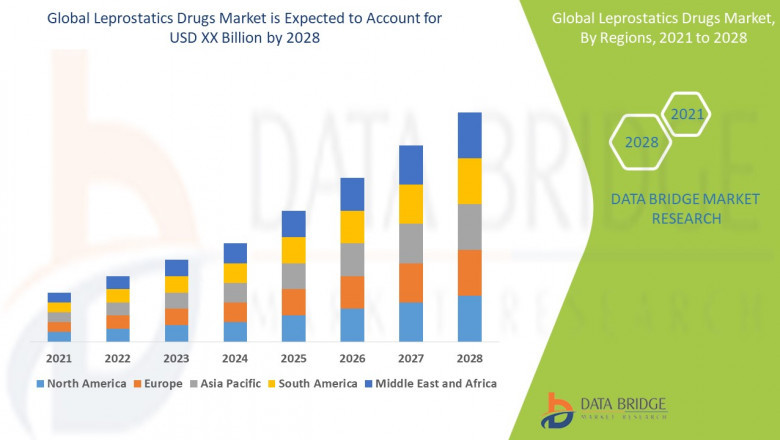views
Leprosy, also known as Hansen’s disease, is a chronic infectious disease caused by Mycobacterium leprae. Though now curable with modern antibiotics, leprosy remains a public health concern in many developing countries. The Leprostatics Drugs Market — encompassing drugs used to treat and control leprosy — continues to play a vital role in public health strategies aimed at eradication.
Market Overview
Leprostatics are a group of antimycobacterial agents used in multi-drug therapy (MDT) for leprosy. Key drugs include dapsone, rifampicin, and clofazimine — the WHO-recommended standard treatment combination. The global leprostatics drugs market remains relatively small but highly focused, driven by government and NGO-funded initiatives rather than commercial demand.
The market size in 2024 was estimated to be around $300–400 million, with a steady but low growth rate of 2–3% CAGR, primarily due to continued disease prevalence in parts of Asia, Africa, and Latin America.
Key Market Drivers
-
Endemic Presence in Developing Countries: Countries like India, Brazil, and Indonesia report the highest number of new leprosy cases annually, sustaining the need for continued drug supply.
-
Government and WHO Initiatives: Programs such as the WHO’s “Global Leprosy Strategy 2021–2030” push for zero transmission, demanding continuous access to leprostatics.
-
Free Drug Distribution: Leprosy treatment drugs are provided free of charge in many endemic regions, often supported by WHO and pharmaceutical donations.
-
R&D for Drug Resistance Management: While rare, cases of drug-resistant M. leprae are emerging, encouraging development of alternative regimens and adjunct therapies.
Market Segmentation
-
By Drug Type:
-
Dapsone
-
Rifampicin
-
Clofazimine
-
Ofloxacin and Minocycline (used in drug-resistant or special cases)
-
-
By Treatment Type:
-
Monotherapy (very limited, discouraged)
-
Multi-Drug Therapy (MDT – standard care)
-
-
By Distribution Channel:
-
Government Supply Programs
-
Hospital Pharmacies
-
NGO/Charity-Based Distribution
-
Challenges in the Market
-
Low Commercial Profitability: With most leprosy drugs donated or subsidized, commercial interest remains low.
-
Stigma and Underreporting: Social stigma leads to delayed diagnosis and underreporting, limiting accurate demand forecasts.
-
Drug Resistance: Emerging drug-resistant strains are a looming threat, requiring more investment in R&D.
Future Outlook
Despite limited commercial activity, the leprostatics drugs market is strategically important for global health. Advances in point-of-care diagnostics, genomic surveillance, and chemoprophylaxis trials are promising developments. Drug repurposing and long-acting formulations are also being investigated to improve compliance and reduce transmission.
Global collaboration through public-private partnerships, such as those involving Novartis and WHO, will remain critical to sustaining the leprosy drug supply and achieving long-term eradication goals.
Conclusion
While not a high-revenue sector, the leprostatics drugs market is vital for achieving global health equity and disease eradication targets. Continued efforts in drug supply, surveillance, and stigma reduction are essential for eliminating leprosy as a public health issue. With sustained global commitment, the market will continue to serve as a crucial instrument in the final battle against this ancient disease.
Get More Details:https://www.databridgemarketresearch.com/reports/global-leprostatics-drugs-market













Comments
0 comment